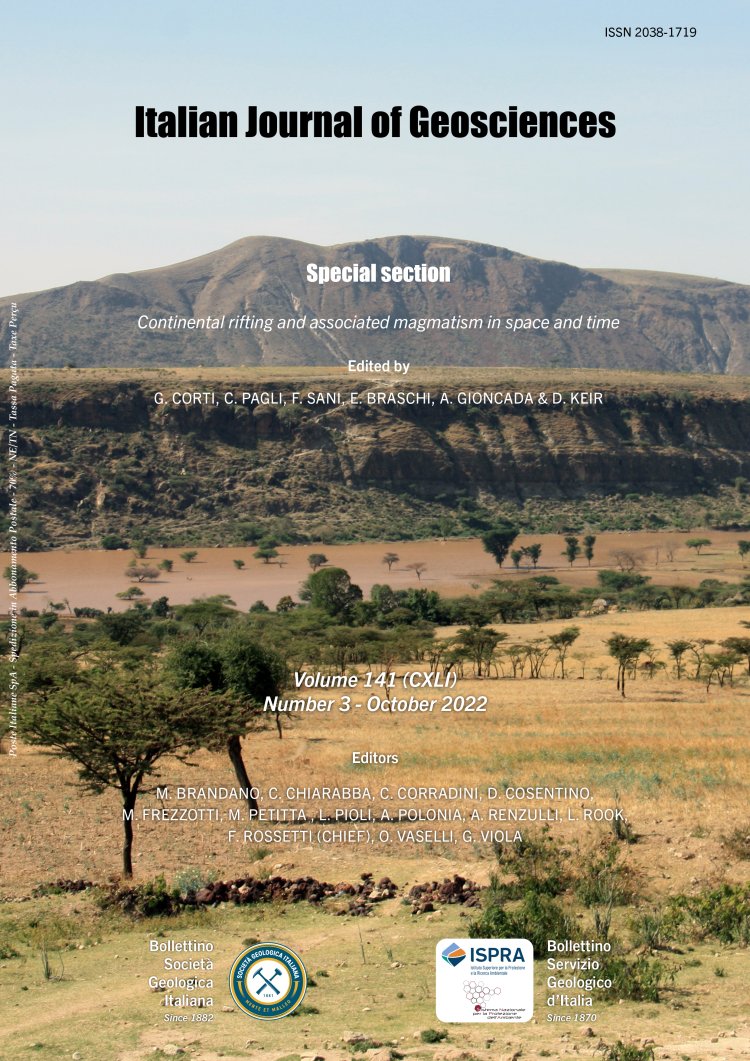
Quaternary off-rift volcanism along a section of the East African Rift System (EARS), from the south Ethiopia to the south Kenya
Francesco Mazzarini1 & Ilaria Isola1
1Istituto Nazionale di Geofisica e Vulcanologia, Pisa, Italy.
Corresponding author e-mail: francesco.mazzarini@ingv.it
Volume: 141 (2022) f.3
Pages: 334-347
Abstract
The magmatic-tectonic evolution of the EARS has been accompanied, since the initial stages of crustal deformation, by the formation of volcanic structures that formed outside of the main rift depression and are described with the general term of flank or off-rift volcanism. In this contribution, six Quaternary off-rift volcanic fields, from southern Ethiopia to southern Kenya are studied in terms of their map view shape, vent distribution and volcanic structures and constructions. They are, from the North one: Mega, Hurry Hills, Marsabit, Nyambeni Hills, Mount Kenya and Chyulu Hills. These six Quaternary off-rift volcanic fields formed far (> 80 km) from the rift’s main border faults and all have an elongated shape having their axis at a high angle to the nearly N-S southern Ethiopian and the nearly N-S trending Kenya rifts and to the transversal, roughly NW-SE-trending, pre- existing Mesozoic Anza Graben. The shape, the spatial distribution of vents as well as the volcanic structures of the fields indicate that each volcanic field records the interaction between the magma dynamics, the crustal structural architecture and the local stress field. The volcanic fields are located at the border of a very cold and stiff lithosphere as inferred by geophysical data. In summary, the location and the evolution of the analysed off-rift volcanic fields are controlled by the inner structures of the EARS whereas their vent spatial distribution and shape are controlled by the local shallow structure of the crust and local stress field.
Keywords
volcanic field shape, vents and fractures distribution, Quaternary, south Ethiopia, Kenya, East African Rift System.
Get Full Text Supplementary Material